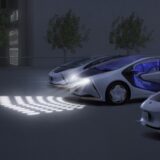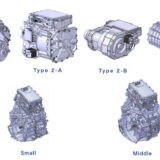Toyota to introduce new powertrains in 60% of its vehicles by 2021
Toyota Motor Corporation said it plans to introduce new powertrains in 60% of its vehicles sold in Japan, the United States, Europe and China by 2021. In a press conference held in Tokyo last week, Toyota said it intends to start deploying these new powertrain units in a rapidly broadening range of vehicle models starting next year.
The new powertrain units provide approximately 10% better power performance and approximately 20% better fuel economy, the company said. Combining the new powertrain units with the overall evolution of the vehicle body, including aerodynamics, weight reduction and others, can pave the way to even greater power performance and fuel economy, Toyota officials said.
Toyota developed these new advanced engines and transmissions and further evolved its hybrid systems based on the Toyota New Global Architecture (TNGA), a complete design philosophy, which was first deployed in the current fourth-generation Prius. With TNGA, Toyota focused on improving handling, ride, and braking performance. The new powertrains are meant to complement this new platform by being both engaging to drive and fuel efficient.
Within the five years to the end of 2021, Toyota plans to introduce 17 versions of nine engines, including a 2.5-litre engine, 10 versions of four transmissions, including multi-geared automatic transmissions and a new kind of continuously variable transmission, and 10 versions of six hybrid systems.
In this way, through TNGA-based modular development, Toyota will roll out numerous types of new powertrain units within a short timeframe, successively introducing them in various vehicle models, starting with the launch of a new-model vehicle in 2017.
By the end of 2021, Toyota aims to have the new powertrain units feature in 60% or more of Toyota-brand and Lexus-brand vehicles sold annually in Japan, the United States, Europe and China. Toyota forecasts that Toyota and Lexus vehicles sold that year in those markets will account for a CO2 reduction in those markets of 15% or more, counting the fuel-efficiency-improvement contributions made by the new powertrain units alone.
Toyota said it aims to reduce new-vehicle CO2 emissions by 90% (compared to 2010 levels) by 2050.
Toyota has named its new line of internal-combustion power plants “Dynamic Force Engines.” To bring out the new engines’ potential to the fullest, their basic structure was completely rethought using TNGA, and their overall structure and configuration were wholly innovated to achieve high-level driving and environmental performance. The new engines employ high-speed combustion technology and a variable control system. They also achieve greater thermal efficiency, resulting in high output, due to a reduction in energy losses associated with, among others, exhaust and cooling systems and the movement of mechanical parts.
Their lineup includes a 2.5-litre engine that has one of the world’s best thermal efficiencies―40% when used in gasoline-powered vehicles and 41% when used in hybrid vehicles (HVs). This new, thoroughly reconsidered and greatly evolved engine features numerous new technologies, such as technologies for minute control that make it highly responsive and allow it to generate ample torque at all speeds.
Toyota also developed two new automatic transmissions―the eight-speed Direct Shift-8AT and the 10-speed Direct shift-10AT. For both, various measures were taken to minimise energy loss and heighten transmission efficiency. The new automatic transmissions are more compact and lighter than comparative conventional transmissions, lowering a vehicle’s fuel requirements. Their lower center of gravity results in both improved straight-driving stability and better cornering stability.
Applying size-reducing, weight-reducing and loss-reducing technologies used in the fourth-generation Prius, Toyota has enhanced its hybrid system for 2.5-litre engines and developed the new, high-performance Multistage THS II for rear-wheel-drive vehicles. The system for plug-in hybrid vehicles (PHVs) has also been enhanced. A new dual motor drive system allows the electric motor, which was hitherto used only as a generator, to provide direct driving power, resulting in powerful driving, even when in electric vehicle (EV) mode.
.jpg)








